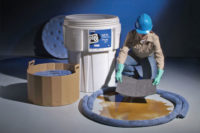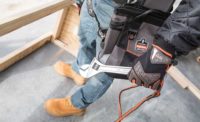A Spill drill action plan
Engage your responders to maximize speed & containment

Like so many things in life, our most productive work experiences are often a result of our willingness to try something new. In his 1962 book “Diffusion of Innovations,” Everett Rodgers popularized a theory outlining how innovation moves through a social system. He categorized the population into five segments: innovators, early adopters, early majority, late majority, and the laggards. Following the theory, you have 50 percent of the population (late majority, and laggards) that remain perpetually “behind the curve” when it comes to adopting innovative new products and technologies.
Personally, I’ve found irony in the marriage of “Diffusion of Innovations” with the widely adopted Six Sigma and Continuous Improvement cultures. We all like to share our CI initiatives and lean programs while giving presentations. However, 50 percent of us are reluctant to try something new.
How can that be?
Fortunately, you don’t have to be a risk-taking visionary to be on the leading edge of innovation. Let’s look at some ideas that can breathe some life into our spill drills.
Spill drill action plan
PDCA (Plan - Do - Check - Act) cycles can be a useful tool not only to capture potential improvements but as a framework to guide it to implementation.
- Plan — Define the problem to be addressed, collect relevant data, and ascertain the problem's root cause.
- Do — Develop and implement a solution; decide upon a measurement to gauge its effectiveness.
- Check — Confirm the results through before-and-after data comparison.
- Act — Document the results, inform others about process changes, and make recommendations for the problem to be addressed in the next PDCA cycle.
At the conclusion of your drill, be sure to schedule a debriefing for all responders to discuss what went well and the areas you can improve in as well. Ask probing questions to challenge your team to push against established standards.
- How can we deploy quicker? Are our spill kits organized in a way to optimize efficiency?
- If we have to contain the spill quicker, what would it require? What part of the process consumes the most time?
- What scenarios could overwhelm our efforts? How can we address this?
- If outside, have we factored in different weather conditions? Are our materials adequate for all possibilities?
Explore all options
Utilize all of your available resources to solve problems. Ask vendors to assist in the process. Present them with the challenge, and ask what products they have that could solve it. Or ask if a product could be developed specifically to solve your problem. This is the root of good innovation. Products should be developed around specific challenges faced every day in the workplace. If you have a specific problem, chances are others do as well.
Look for improvements in inconspicuous places. When you’re regularly working with new products, it’s often easy to find solutions in places others have passed over. A few things to consider:
- Weather is always a variable, so have a plan to address all of your local possibilities.
- Speed can be found in a number of ways, none of which require moving your feet faster. Think about organization or better material utilization. Maybe instead of using three 10-foot sections of boom to surround a 25-foot spill, try one 25-foot section. Or if your PPE requires duct tape to seal around your boots and gloves, make sure a roll is with your PPE and not sitting in a toolbox somewhere else.
- Minimize your equipment storage footprint. Keep as much material as possible close at hand. Reduce the amount of steps required to grab what you need, or time spent searching for the right tool.
Progress is inevitable
It’s human nature to define a process that works and leave it unchanged. That’s effective in preventing regress, but you’re hampering progress. Progress is, after all, what got us to where we are today. Let’s not shy away from it now. Live the “Continuous Improvement” culture and never be satisfied with adequate. When responders, supervisors, and suppliers all work together, we experience game-changing innovations.
It’s important to step back and recognize the value in those efforts. Look at how much cleaner industry has become in the past 50 years. This is a direct result of our efforts. It’s our spill drills aimed at minimizing the potential impact of a contaminant when an accident occurs. Embrace change, look for innovation, and move your company forward.
Looking for a reprint of this article?
From high-res PDFs to custom plaques, order your copy today!





